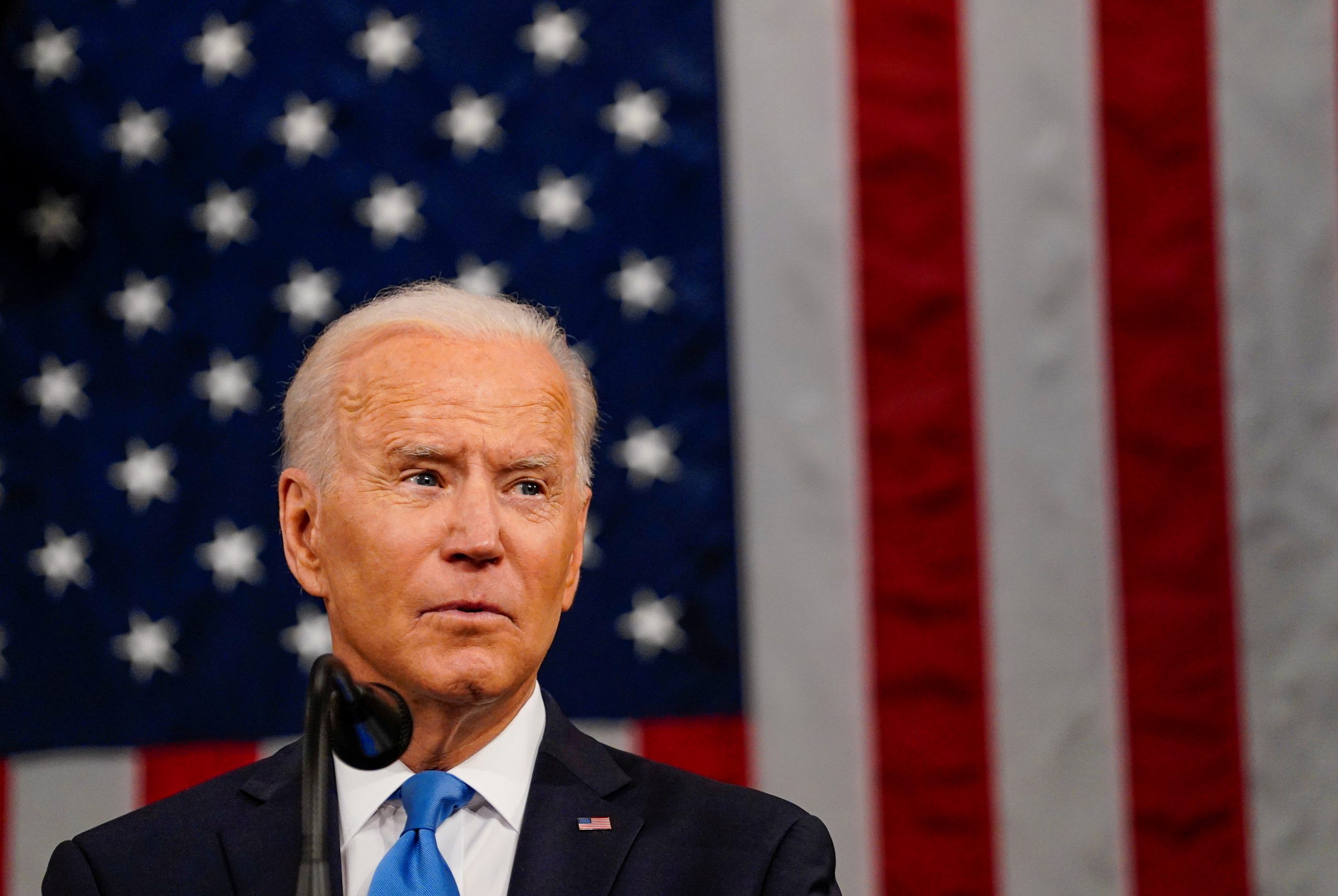During a bizarre, rambling news conference on June 24, which was supposed to be about announcing a bipartisan deal with Republican senators on an infrastructure spending plan, President Joe Biden had some interesting thoughts regarding the labor shortage issue.
According to a Rev.com transcript of the event, the remarks came after Biden was asked how he was able to strike an infrastructure agreement when “48 hours ago this deal was kind of in a rough place.”
This began a digression, with the president telling reporters that he “didn’t have that bleak view you all had” and how he was “going to drive you crazy the next four years, because I’m going to tell you the truth as I see it.”
Biden eventually touched on reporters questioning him about the labor shortage, “asking me, ‘Well, you know, guess what? Employers can’t find workers.'”
“I said, ‘Yeah, pay them more. This is an employee’s bargaining chip now,'” he continued, whispering at reporters. “What’s happening? They’re going to have to compete and start paying hardworking people a decent wage.”
WATCH: President Biden addresses talk of labor shortages amid ease in Covid-19 restrictions.
“Pay them more. This is an employees’ bargaining chip now.” pic.twitter.com/XlBE0KHK2I
— MSNBC (@MSNBC) June 24, 2021
Not only was it surreal, but Biden predictably missed the point. The labor shortage isn’t just caused by businesses competing among a limited pool of workers, conservatives have said. That would be the normal course of supply-and-demand economics in a free market.
Instead, it’s being caused by competing against a federal government that will, in many cases, distort the labor market by paying potential employees more to not work.
Biden mightn’t believe it, but the Federal Reserve certainly indicates we were right. On Friday, the Fed delivered its semiannual report to Congress — and several times, the U.S. monetary policy body noted the $300 a week the federal government has been giving in enhanced unemployment benefits has depressed supply in the labor market.
“With economic activity rebounding, labor demand rose briskly in the spring, while the supply of labor struggled to keep up,” it said on page five of the 75-page report.
“Employers reported widespread hiring difficulties, job openings jumped to about 30 percent above the average level for 2019, and the ratio of job openings to job seekers surged. With a dwindling pool of temporarily laid-off workers to recall, hiring increasingly involved reallocation of workers across firms and industries, a more time-consuming process. In addition, enhanced unemployment benefits have allowed potential workers to be more selective and reduce the intensity of their job search.”
On page 10, meanwhile, the report noted that “support from enhanced UI has been especially consequential for lower-wage workers, who have borne the brunt of recent job losses and who have benefited most from broader coverage and higher benefit levels.”
“Many of the factors constraining labor force participation should gradually abate in the coming months, and, as they do, the overall participation rate should rise and the demographic disparities in labor force participation that widened during the pandemic will likely continue to narrow,” it stated.
“With federal pandemic UI programs slated to end in September and many states withdrawing from them in advance of their nationwide expiration, any effects of enhanced UI benefits on labor force participation will likely wane soon as well.”
As the Daily Wire’s Ben Zeisloft noted, however, the Federal Reserve didn’t advocate in the report for ending the payments before they’re set to automatically expire on Sept. 6. Fed Chairman Jerome Powell told the House Subcommittee on the Coronavirus Crisis during June testimony that these were “judgments for people who stand for election.”
“I think we’ll see strong job creation in the fall. I really do,” Powell told Rep. Jim Jordan, the Ohio Republican.
“As you pointed out, 9.3 million job openings, many millions of people unemployed. There seems to be some kind of a speed limit. It may just be that it’s hard to match up with a new job, and people feel like they can wait a little bit longer and really shop carefully.”
The question is whether those businesses can afford to stay afloat paying low-skilled workers if the businesses are competing against a federal government who’ll may them more to not labor at all — or at least until September, so that potential employees can “really shop carefully.”
According to the U.K. Daily Mail, unemployed Americans are now being paid, on average, the equivalent of $16-an-hour to stay home and do nothing. That’s more than double the federal minimum wage of $7.25 an hour.
How will businesses compensate for these inflated wages? They’ll raise prices — something Americans can’t afford now with a 5 percent inflation increase in May. That’s the highest number in 13 years. The Core Price Index — which discounts volatile energy and food prices — was 3.8 percent in May, the highest since June of 1992.
But yes, pay them more, Biden says in that creepy sotto voce tone. That’s his answer after a year of Democrat-led lockdowns decimated small businesses. Now, as the surviving businesses are fighting for their lives, he wants them to up wages because he’s bribing the unemployed with federal money so they can stay idle. That’s supposed to be their “bargaining chip” as there are unfilled jobs all over the country.
Even with that strange whisper, the most bizarre thing about Biden’s June 24 statement is his grasp of economics.
This article appeared originally on The Western Journal.

























 Continue with Google
Continue with Google